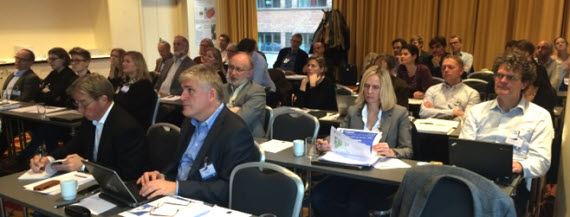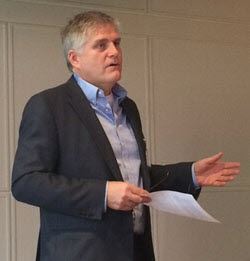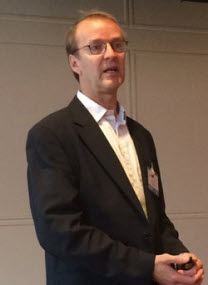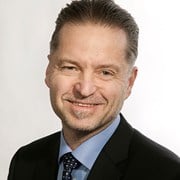NordiCCS - Nordic CCS Competence Centre
NORDICCS Final conference
Contact person
After four years in operation, the NORDICCS project staged its Final Conference at the Radisson Blu SAS Scandinavia hotel in Oslo, on November 10. More than 40 attendees had gathered for the full day event, which aimed at summarizing the findings of the project and at discussing possibilities for continuing the successful cooperation between the Nordic partners.

NORDICCS Final Conference, Oslo, November 10, 2015
In his opening address, NORDICCS Director, Dr. Nils A. Røkke, summarized the NORDICCS project, and stated that he was very proud of what has been achieved. The Centre was established in hard times for CCS. Questions to be addressed were; Where can CO2 be stored the Nordic countries, what is the most efficient way of transporting CO2 in the region and which capture technologies are best suited to the oil and gas, power and industrial processes found in the region. –We were to pursue industrial cases – notwithstanding the territorial borders and to think as a region with common goals and opportunities. What is the business case for CCS here and what are the opportunities for technology development and innovation, which are the barriers, Dr. Røkke said. He underlined that ambitions were high and encompassed in a Nordic team feeling that: we can do this!

NORDICCS Director, Dr. Nils A. Røkke, opening the conference
Dr Røkke continued to highlight some of the most important results from the project:
- The NORDICCS storage atlas, a web-based storage atlas for the Nordic region. This is a comprehensive view of where CO2 can be stored and what the estimated capacities are.
- Clusters of transportation in the region. A mix of pipelines and ship transport is the best way of doing this.
- Capture technologies and combined capture and storage. The Icelandic case, storing CO2 from geothermal wells is a groundbreaking project.
- The Nordic CCS Roadmap, which synthesizes all of the findings from the NORDICCS project. This is truly a document that will be a reference for the shaping of the Nordic energy and climate policy.
- Team and capacity building and dissemination – a Nordic team of excellence in CCS, which will have long lasting effects. Embedded are PhD studies and two NORDICCS Summer Schools. The summer schools have educated more than 60 young researchers, PhD and Post Docs, in CCS.
Dr. Røkke ended his summary with expressing disappointment in the fact that, despite the positive outcome and all the positive feedback, no funding has been obtained to continue the NORDICCS project. – Building a Nordic team of excellence in CCS is no small feat and we should strive to maintain this momentum for the benefit of the region's energy and climate strategy and policy. The team is eager to explore a continuation of this unique Nordic co-operation in CCS, and we hope there will be funding instruments to allow for this to happen, he said.
Mr. Svend Søyland of Nordic Energy Research (NER) welcomed the participants on behalf of the financing organizations. He expressed great satisfactions with the outcome of the NORDICCS project. He stated that the main objective of the CCS activities funded by NER is to boost CCS deployment. NER seeks to provide Nordic industry-driven leadership within CCS innovation and realization by: demonstrating how CCS can contribute to the Nordic portfolio of climate change mitigation options; enabling the Nordic countries to join forces to become pioneers in large-scale implementation of CCS; multi-contextual focus to utilization Nordic differences for broad stakeholder and global relevance; and strengthening the competitive power of the region by combining complementary capacities of the Nordic countries.

Mr. Svend Søyland of Nordic Energy Research welcoming the participants
Mr. Søyland continued with a brief presentation of the Green Growth project, which is at a defining stage. The goal of the program is provide the Nordic societies with excellent research, policy advice, know-how and innovation to develop a sustainable and green Nordic region by: sustainable regional and urban development; reducing existing industries' environmental footprint; and increasing the competitiveness of Nordic industries in the growing international markets for clean technologies, products and services.
The conference continued with selected presentations of the most central results from the NORDICCS project. The complete program and the presentations can be found below.
As a representative of the industry participants in the NORDICCS project, Mr. Bjørn Berger of Statoil stated that CCS is a vital part of the equation in reducing CO2 emissions. The technology is feasible, but the industry needs incentives. He concluded by stating that NORDICCS has delivered beyond expectations, and that he would welcome a continuation of the project.
The Conference was ended with a session where continuation of the project and possibilities for new funding was the topic. Several of the participants in audience expressed their disappointment with the lack of funding for continued operation, and encouraged the project to continue to explore opportunities. Dr. Ragnhild Rønneberg of the Research Council of Norway said that important and excellent work has been carried out, and that the project should be continued. Also Dr. Sverre Quale, Project Director of ECCSEL, agreed that activities should be continued, and suggested that possibilities for joint activities with ECCSEL be investigated.
The conference was led by, Mr. Gunnar Sand, Chairman of the NORDICCS Steering Group (SG). He stated in his closing remarks that all the good work and the very positive feedback – both from participants and from individuals and organizations external to the project – has given motivation to continue the search for funding and continued operation, and that possibilities will be pursued by the SG.
Presentations:
- Opening and State of play - CCS
Nils A. Røkke - CCS in Nordic energy research - and Green Growth
Svend Søyland - Deployment of CCS in Nordic industries - case studies
Ragnhild Skagestad - WP4 - CO2 capture - Industrial case studies
Stefania Osk Gardarsdottir - Recommended CO2 transport solutions in the Nordic region
Jan Kjärstad - Challenges for CO2 transport
Halvor Lund - The Nordic Storage Atlas - an entrance to knowledge
Karen L. Anthonsen - Improved CO2 storage capacity estimates from injection simulations
Ane Lothe - The rapid in situ mineralisation of CO2 and CO2-H2S-H2-gas mixture at the Carbfix site in SW-Iceland
Sandra Ó. Snæbjörnsdóttir, et.al. - CCS communication in the Nordic region - results and highlights
Jacob Kielland Haug - Nordic CCS Roadmap, Update 2015
Marit J. Mazzetti, Nils Røkke, Nils Eldrup - Gassco and Transport of CO2
S. Solvang - Statoil CCS and NORDICCS
Bjørn Berger - Nordic energy intensive industry
Filip Johnsson
